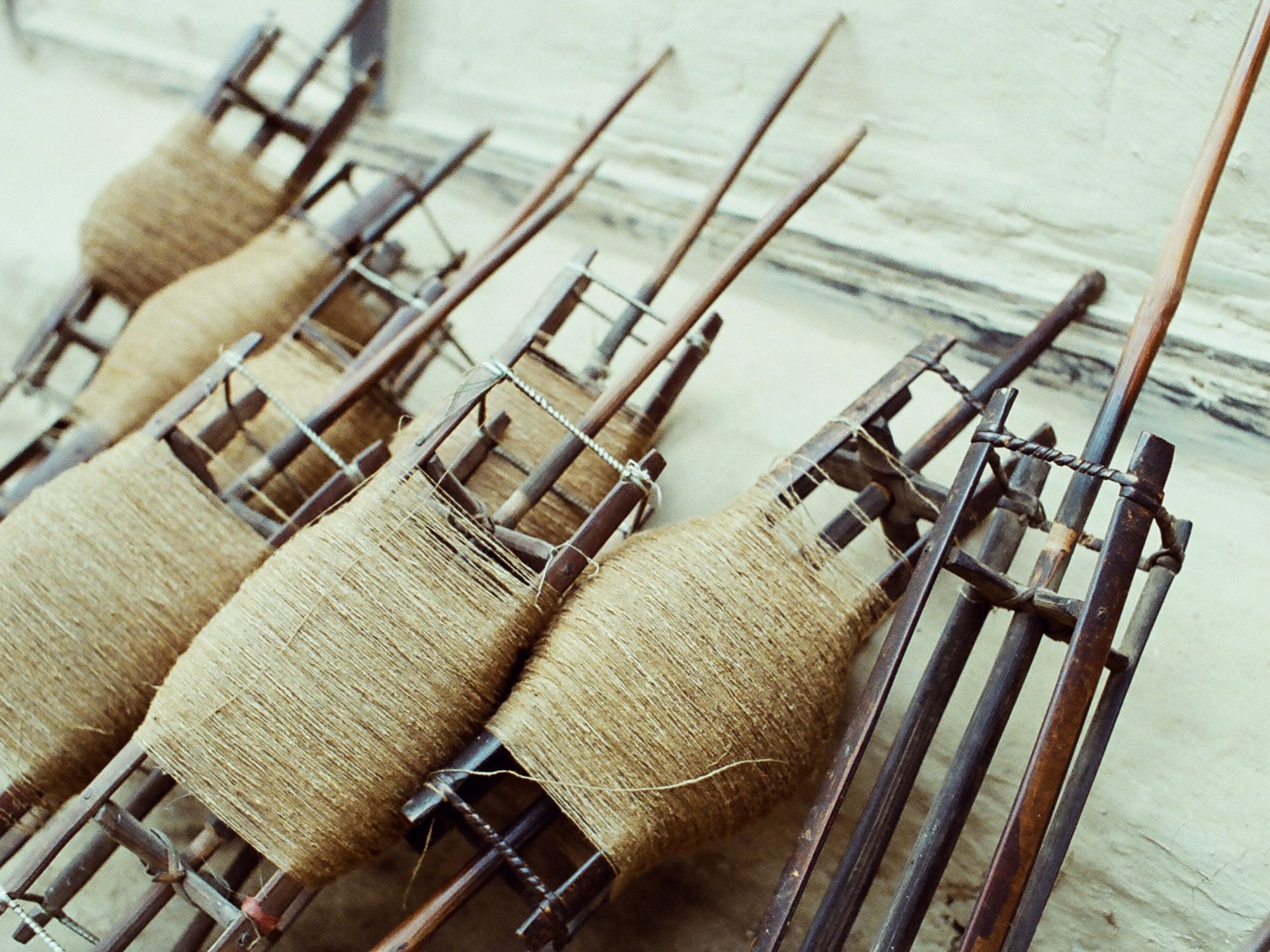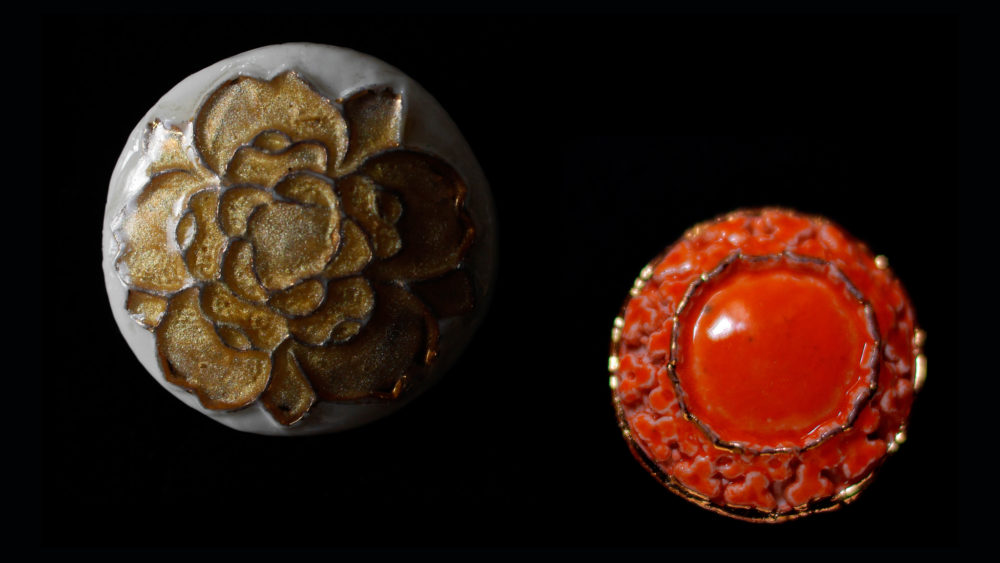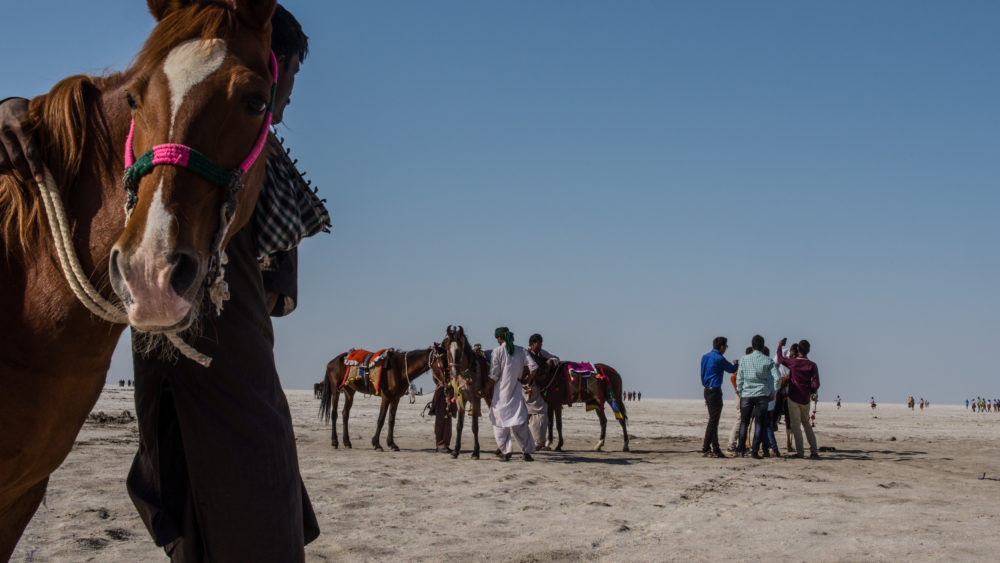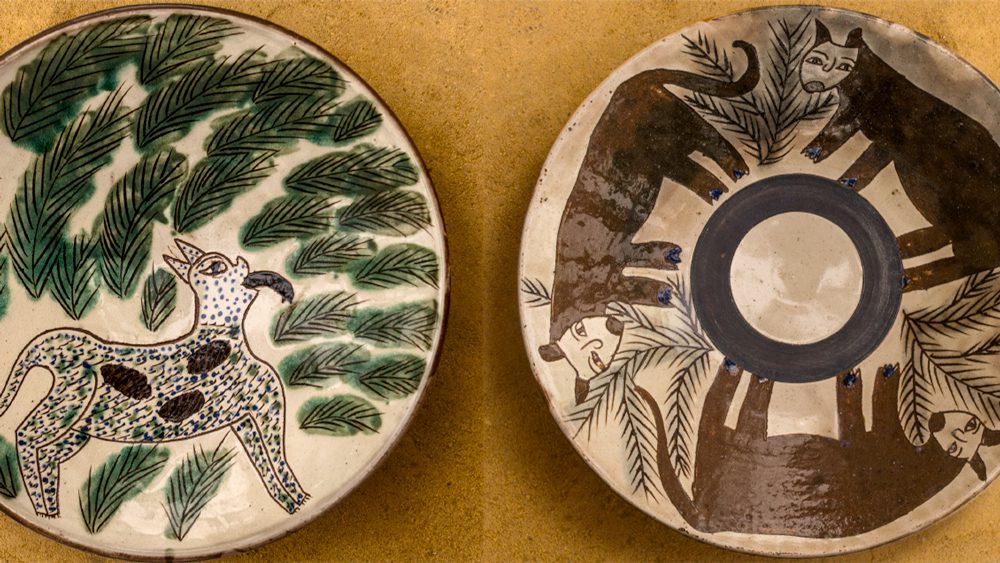Rice fields in Assam: Rice is the most essential ingredient of every Assamese meal and highly valued by the Assamese people.
Assam is an idyllic region of Northeast India.
It is magical for its cultural diversity, its imposing temples, its breathtaking scenery of tea plantations,
and the fertile land on which countless plants used for cooking, ceremonies and dyeing grow.
The unique craftsmanship and the warmth and affection of the Assamese people have won our hearts
and make us want to come back again and again.
It is a surprising fact that Assam,
being a less discovered and frequented region, is the state that has the highest number of handloom households in India.
Among others, the handloom is used to produce silk, a textile that has an important role in the economic development
of the region and, more importantly, for the households of spinners and weavers.
The loom, made out of bamboo and wood, epitomizes
the traditional skills of local artisans garnered through the centuries and also depicts the nature surrounding it.
In Assam, bamboo is a raw material of great versatility and forms an integral part
of the lifestyle and economy of the region.
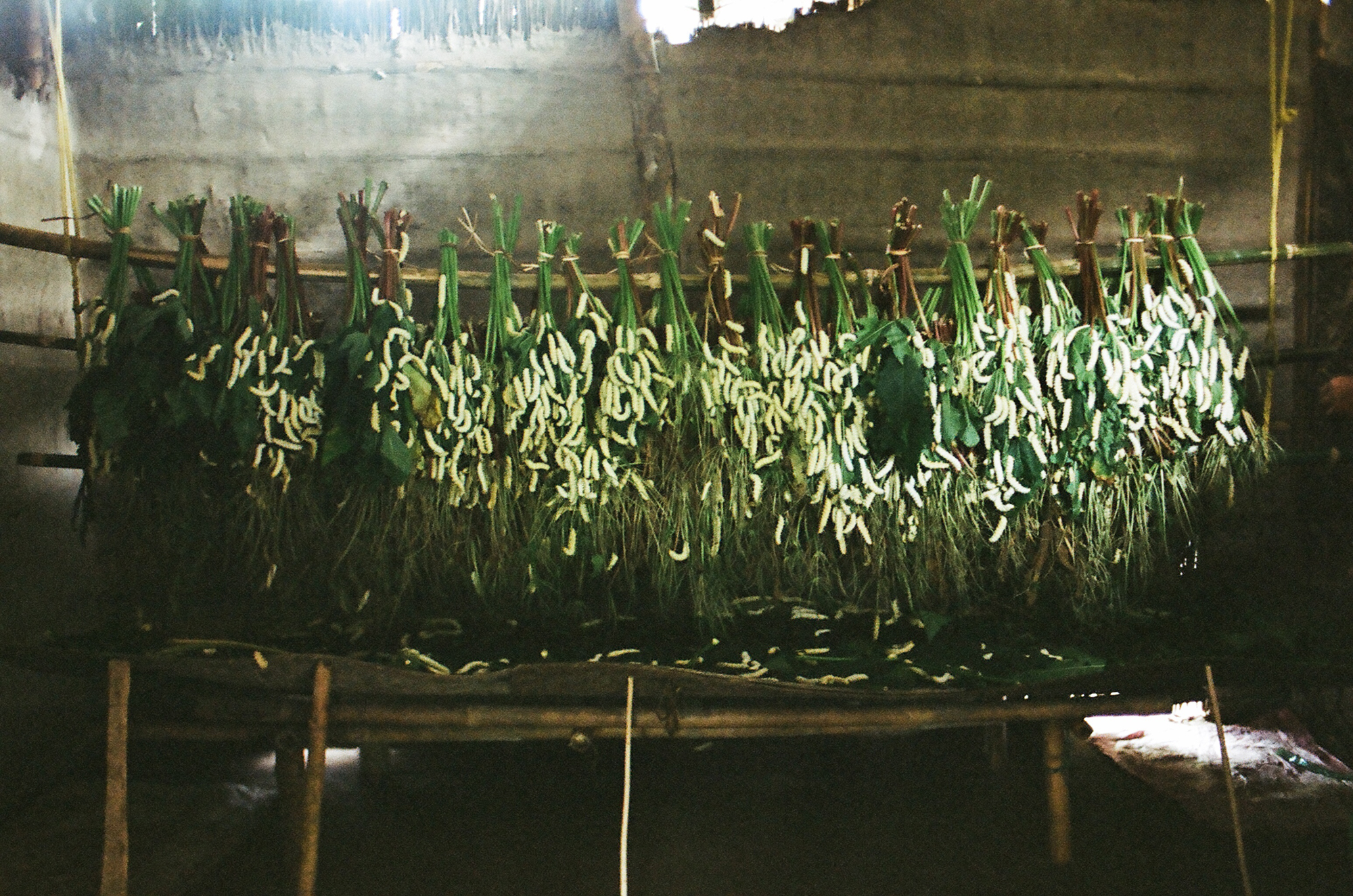
The Samia cynthia ricini , a wild silk worm found mostly in the tribal areas of Assam and that grows for about 30 days by eating castor leaves.
Spinning, and Weaving
Eri Silk
There is a large variety of silk in Assam but the most impressive one to us is the eri silk, also known as peaceful silk or "the poor man's silk" within Assam. It has textured surface with delicate yet long-lasting feel. Eri silk also has very beautiful shades, cream or slightly reddish, which are determined by the food the worms eat.
Silk production usually means inevitably killing silkworms. However, the cocoon of the eri silk is open-mouthed. This means that the cocoon can only be processed when the moth leaves. The empty cocoon is first cooked in boiling water. Through tapping them in cold water, they then become small cakes that resemble cotton pads. After being tapped a few times, they are thrown against the mud walls of the typical Assamese houses to dry for a few hours. Once the cakes are dried, the spinning can begin.
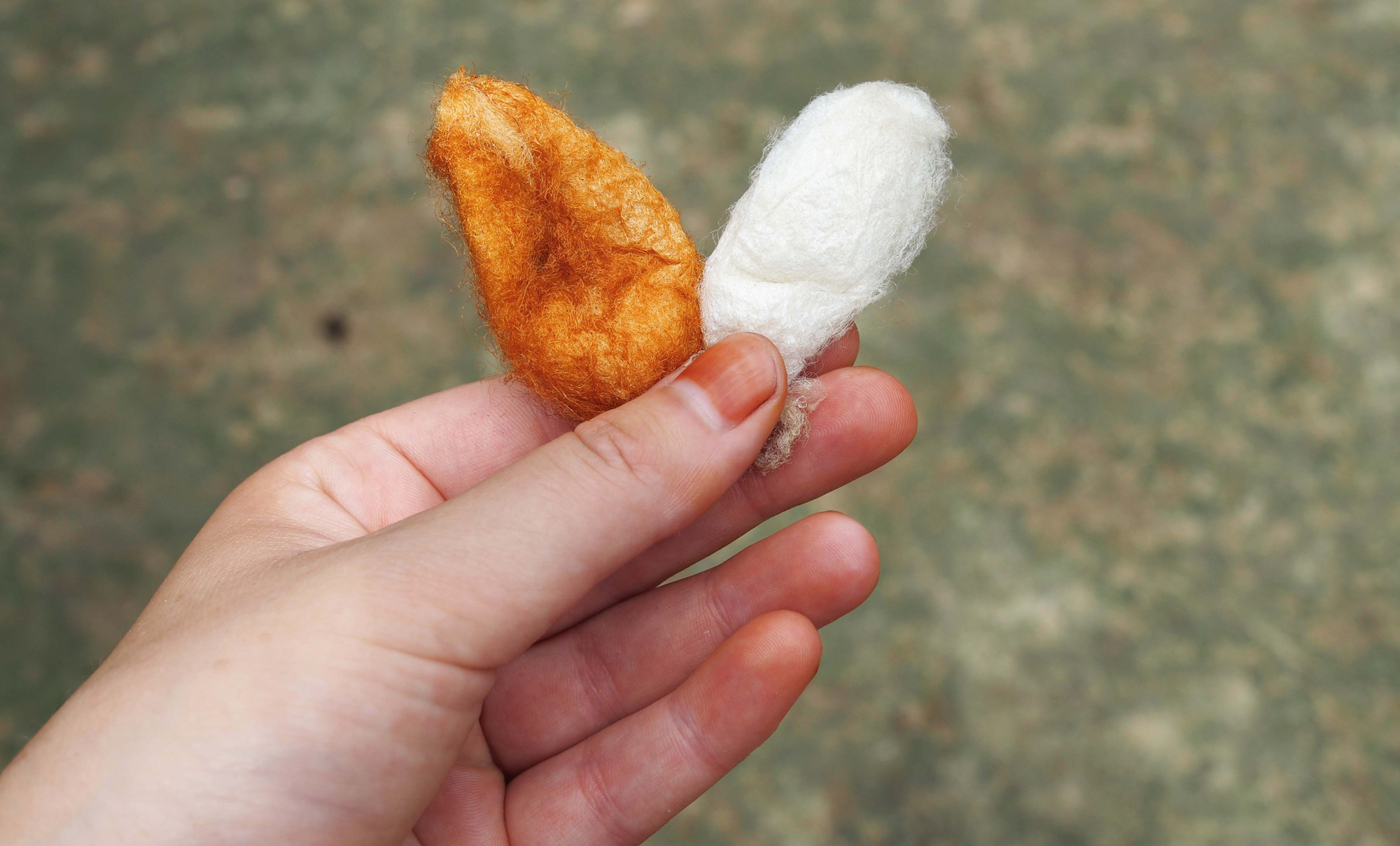
The different shades of eri cocoons which is determined by the worm's food.
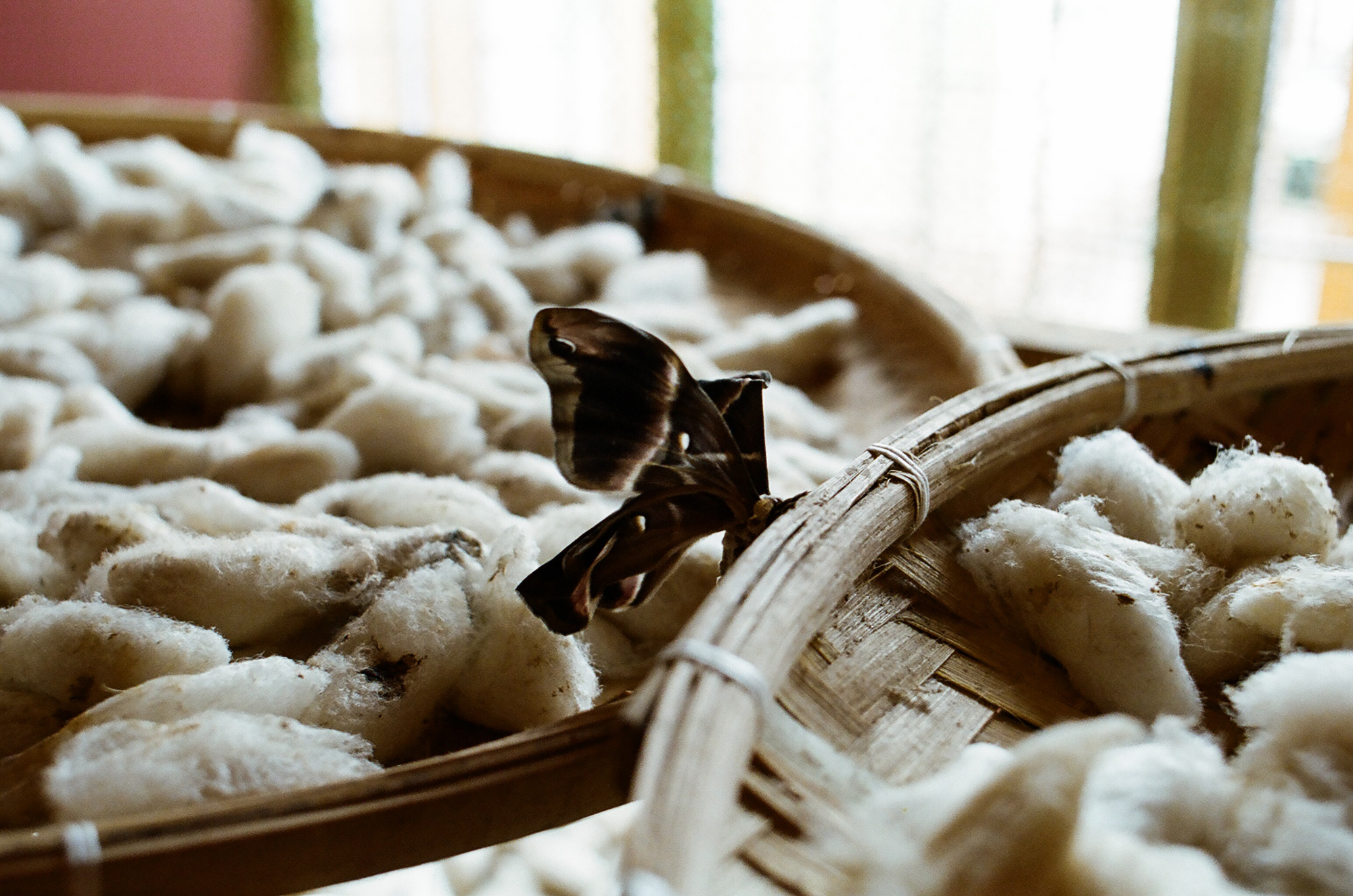
The eri butterfly after leaving the cocoon.
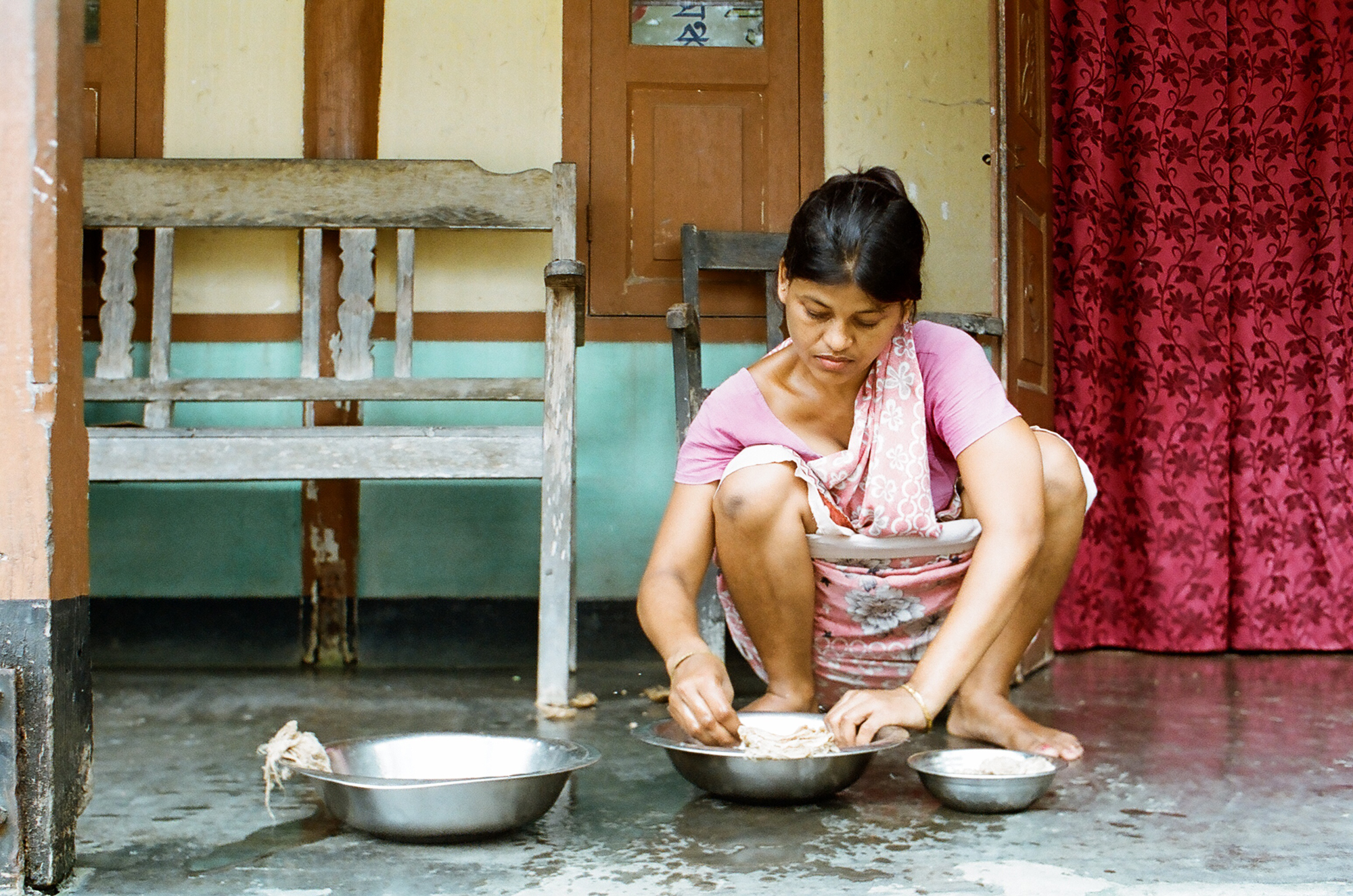
(VIDEO) Making the boiled, empty cocoons into cakes / (ABOVE) Latika making the boiled cocoons into cakes, which are then dried against the walls.
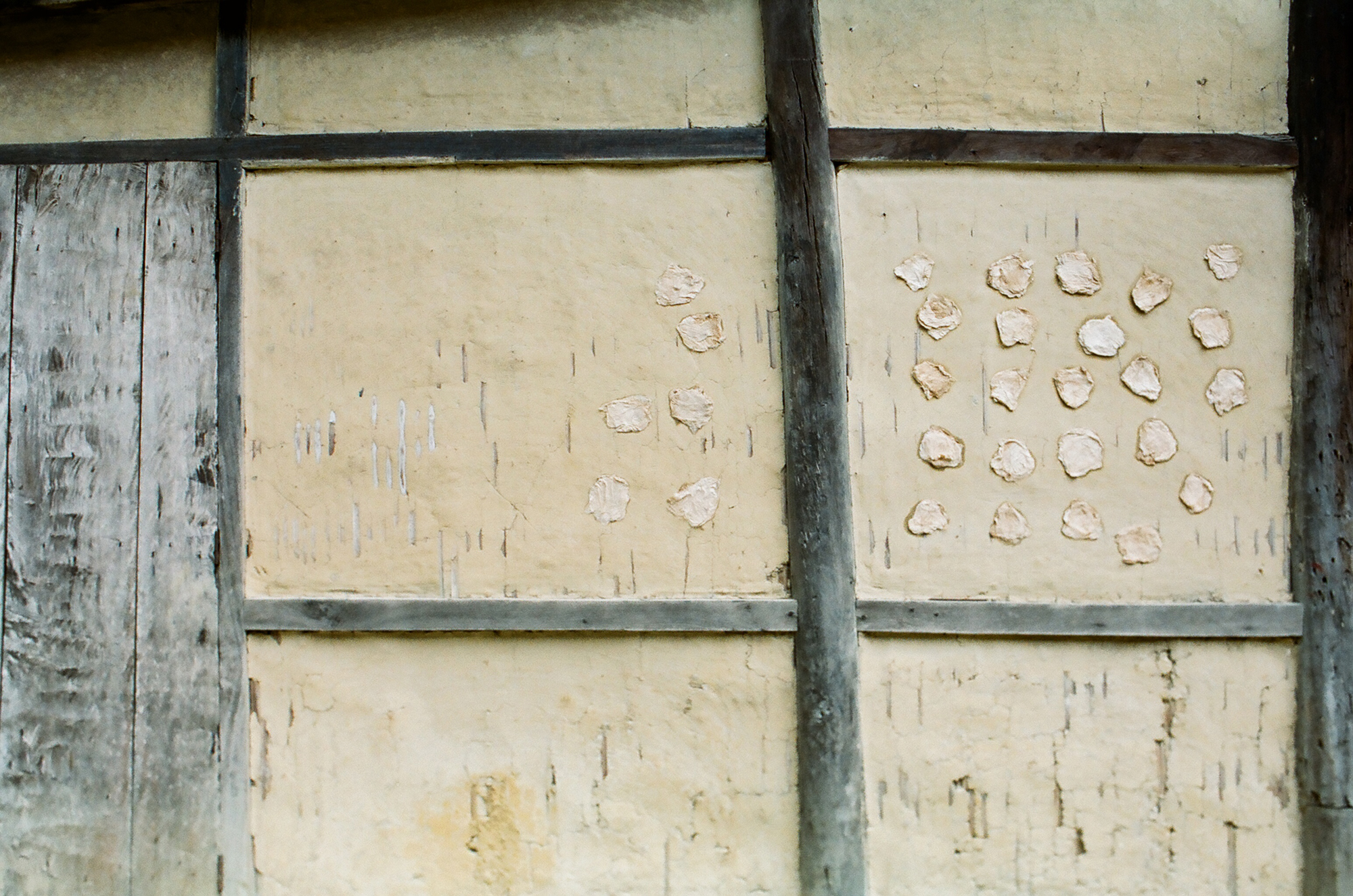
Eri silk cakes drying against the mud walls of Latika's house.
There are many spinning techniques that are used in cultures around the world. But spindle remains the one indispensable tool. In Assam, the traditional technique uses the drop down spindle with a weight. This tool can also be used for mobile spinning, a technique where the spinner walks and moves around freely while spinning the yarn. This is an incredible sight to see. The weights range from turtle shells, a rather ancient weight, to round pieces of broken "chapal" (flip flops in Hindi), which is a great way to reusing and recycling. Even though spinning with a machine is far more efficient, handspinning and handweaving remain an integral source of income to the artisan communities of Assam. A spinner from the rural areas can create 400 meters of yarn in the four hours that make up their usual workday. In comparison, a machine can produce 600 kilometers within the same amount of time. Yet it is through this collaborative process of home-based crafts that the Assamese can gather together in a community and create a unique cultural heritage. So whenever we stay with our team in the village, the sound of the looms' treadles are omnipresent and an indicator that another fabric full of character is being created in someone's backyard.
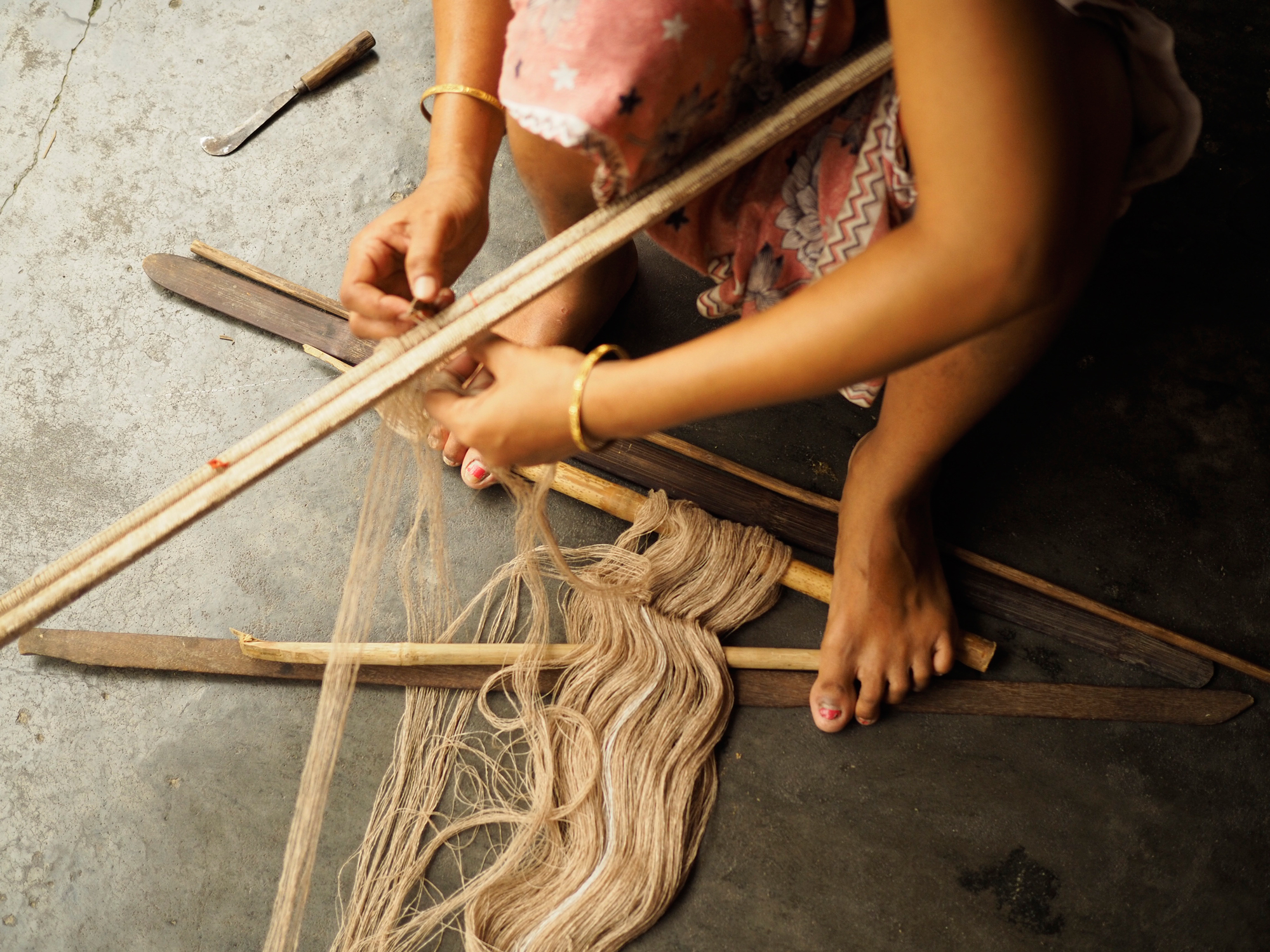
The delicate preparation of the warp using a small bamboo stick.
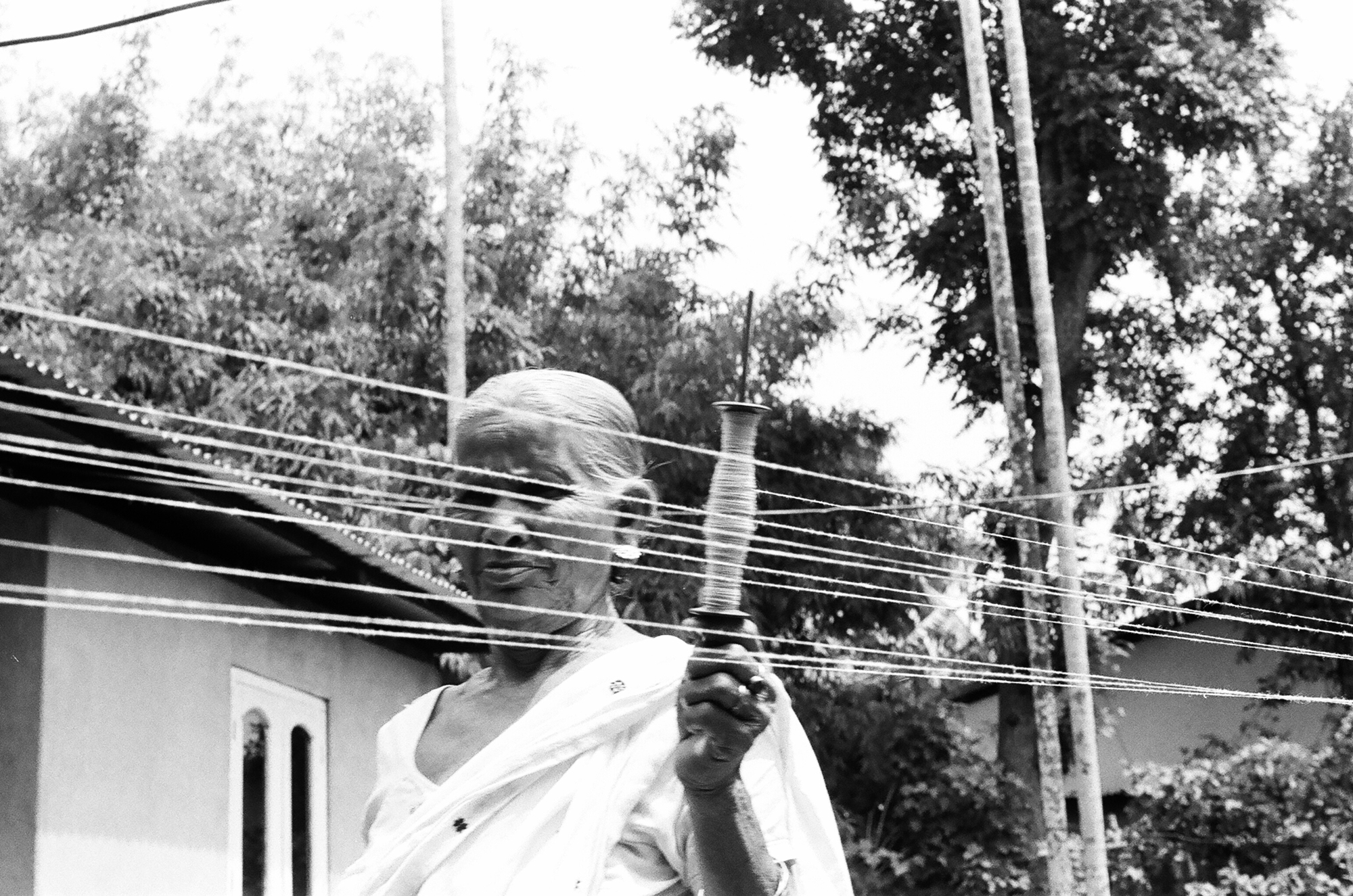
Pit Mala Kalita walking rounds to prepare the length of the warp to make eri fabric. The length of the warp in meters is determined by counting the number of rounds walked.
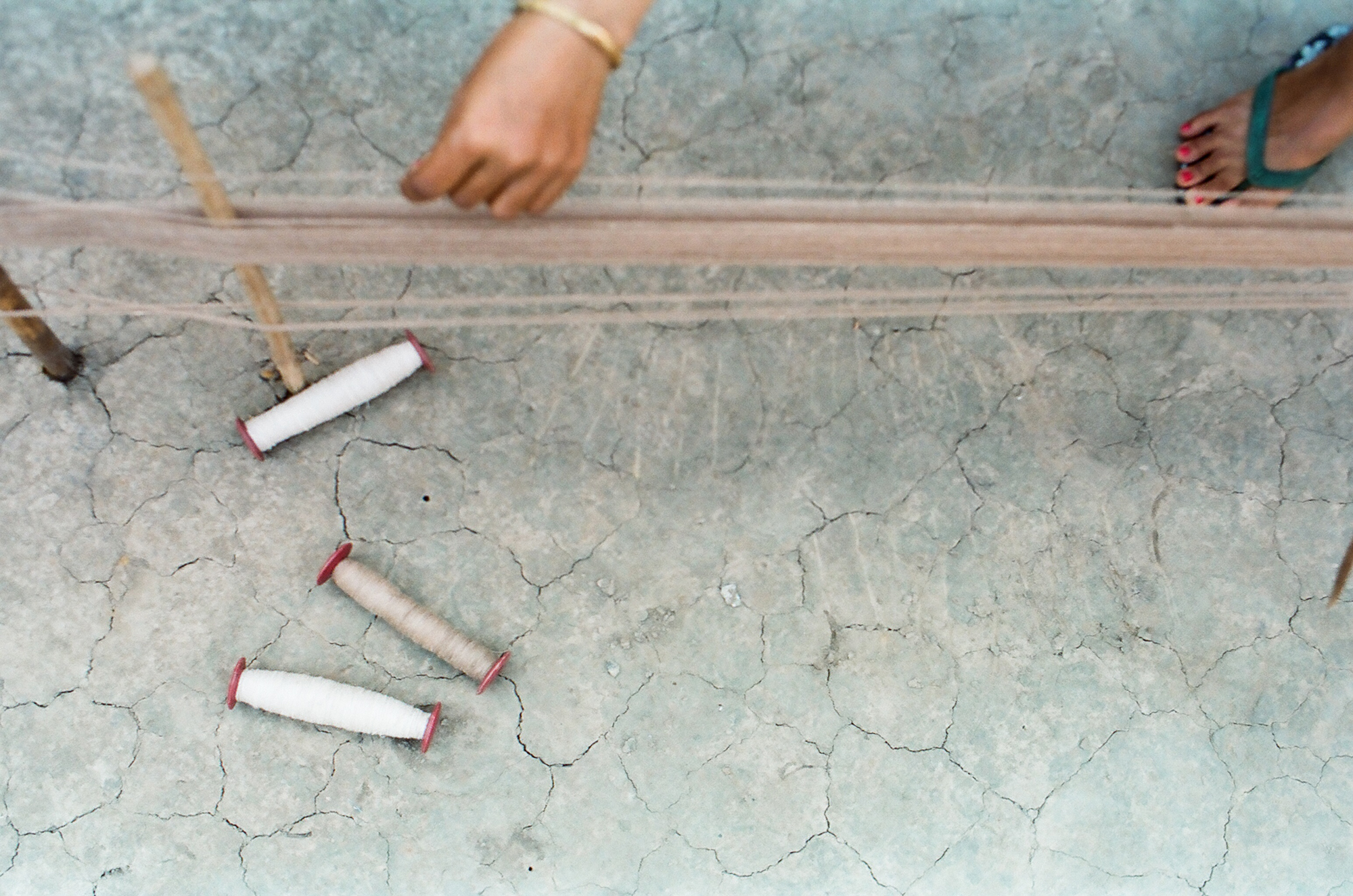
Latika marking the rounds walked with a small stick on the mud floor.
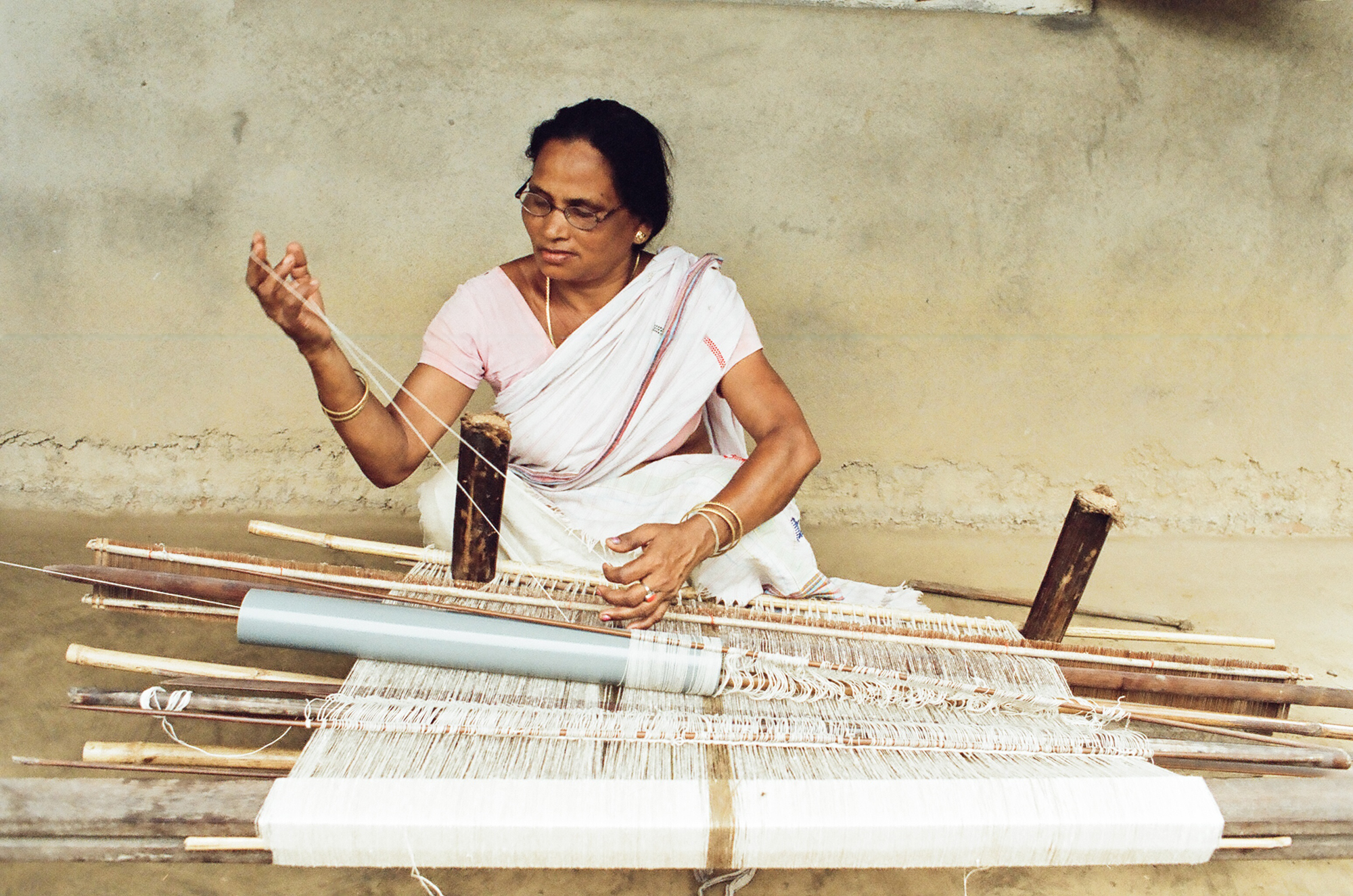
Subarna giving the final touches to the warp before it is transferred to the loom.
of Dyeing
with Seasonal Plants
The tradition of dyeing is also part of the cultural heritage of the Assamese communities. Even though there are no elaborate writings about the rich dyeing culture in Assam, the knowledge of dyeing with plants is widely spread. Being a protein fiber, eri silk absorbs the dyes very well, so the use of leaves, herbs and flowers produces great results.
In January 2017, during our biannual stay in Assam, we dyed with seasonal local plants such as turmeric and areca nuts. Doing this allowed us to observe and experience the closely linked process of using seasonal dyes—from harvesting plants, to working together as a community to prepare these raw materials, to selling them at the market or keeping them for personal use.
What we found fascinating was that so many plants are integral to the lifestyle of the Assamese people. Turmeric is a spice that is mostly used in cooking, to give dishes a beautiful yellow color. Areca nuts are one of the most important foods in Assam because they are offered to guests when they visit. Known more commonly as "paan" in India, they are chewed along with lime and betel leaves for an energizing and euphoria-inducing effect.
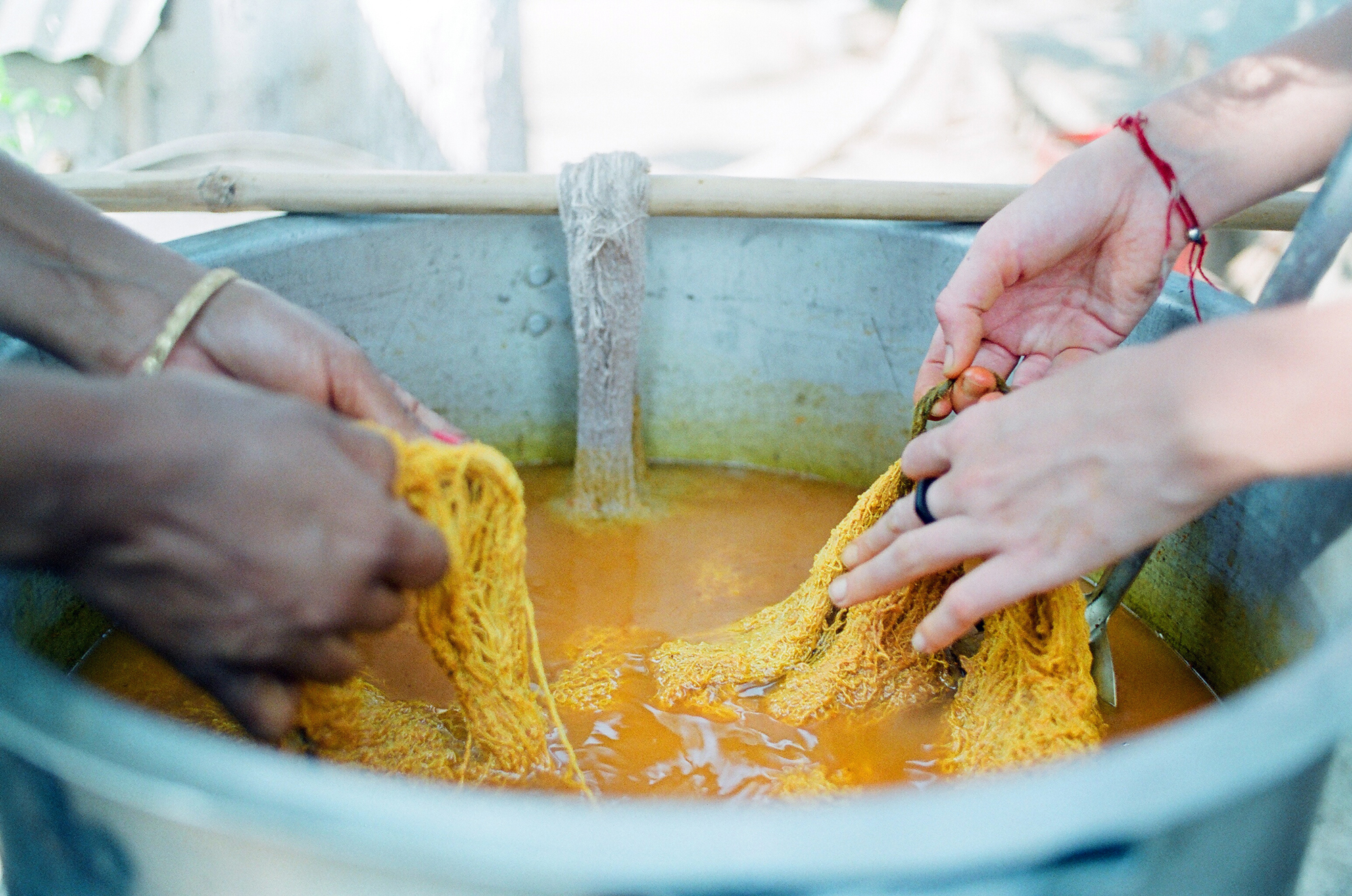
The process of dyeing with turmeric to create a warm yellow shade.
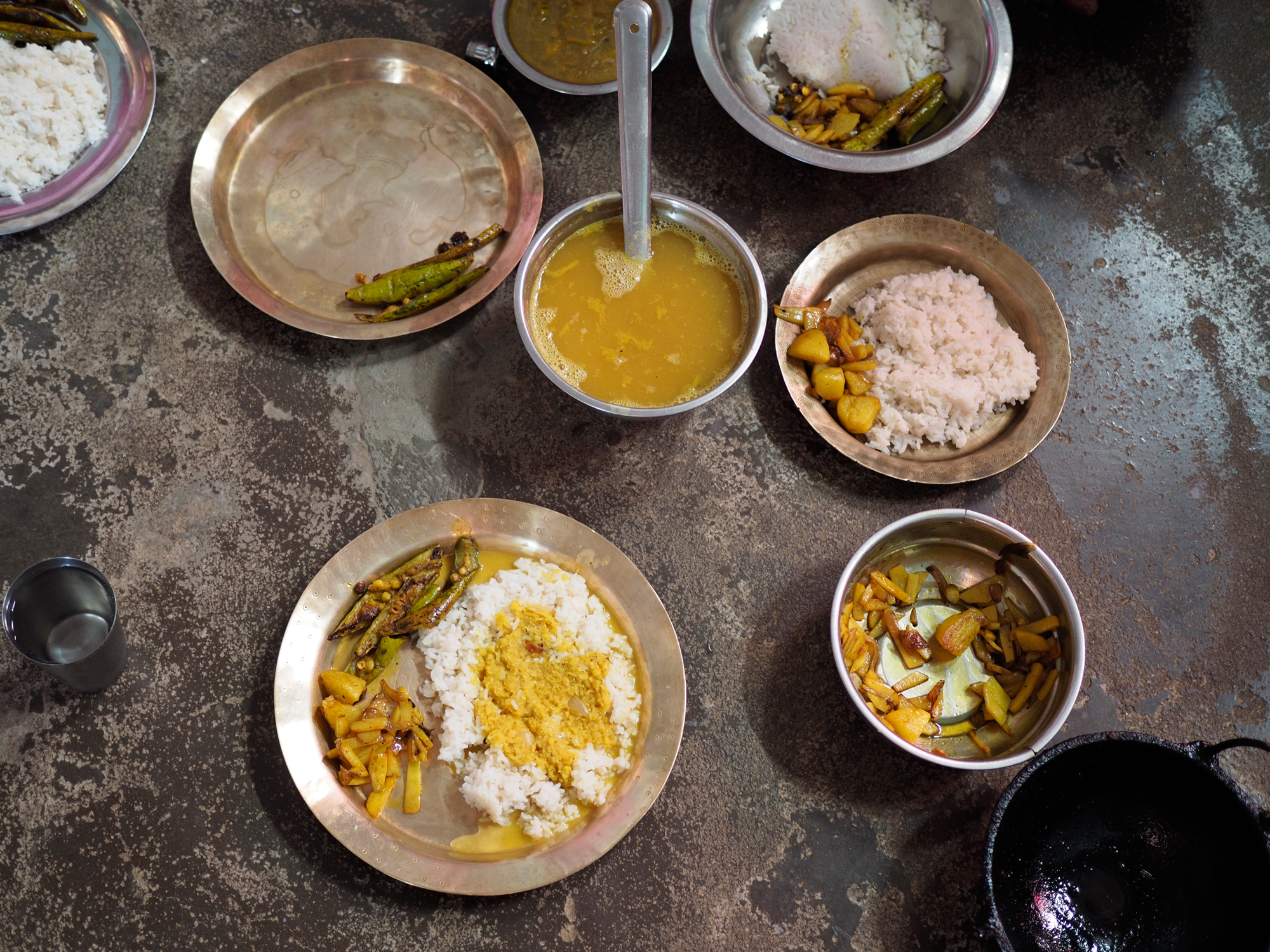
Turmeric, the most used spice in Assam, gives dishes a rich yellow color.
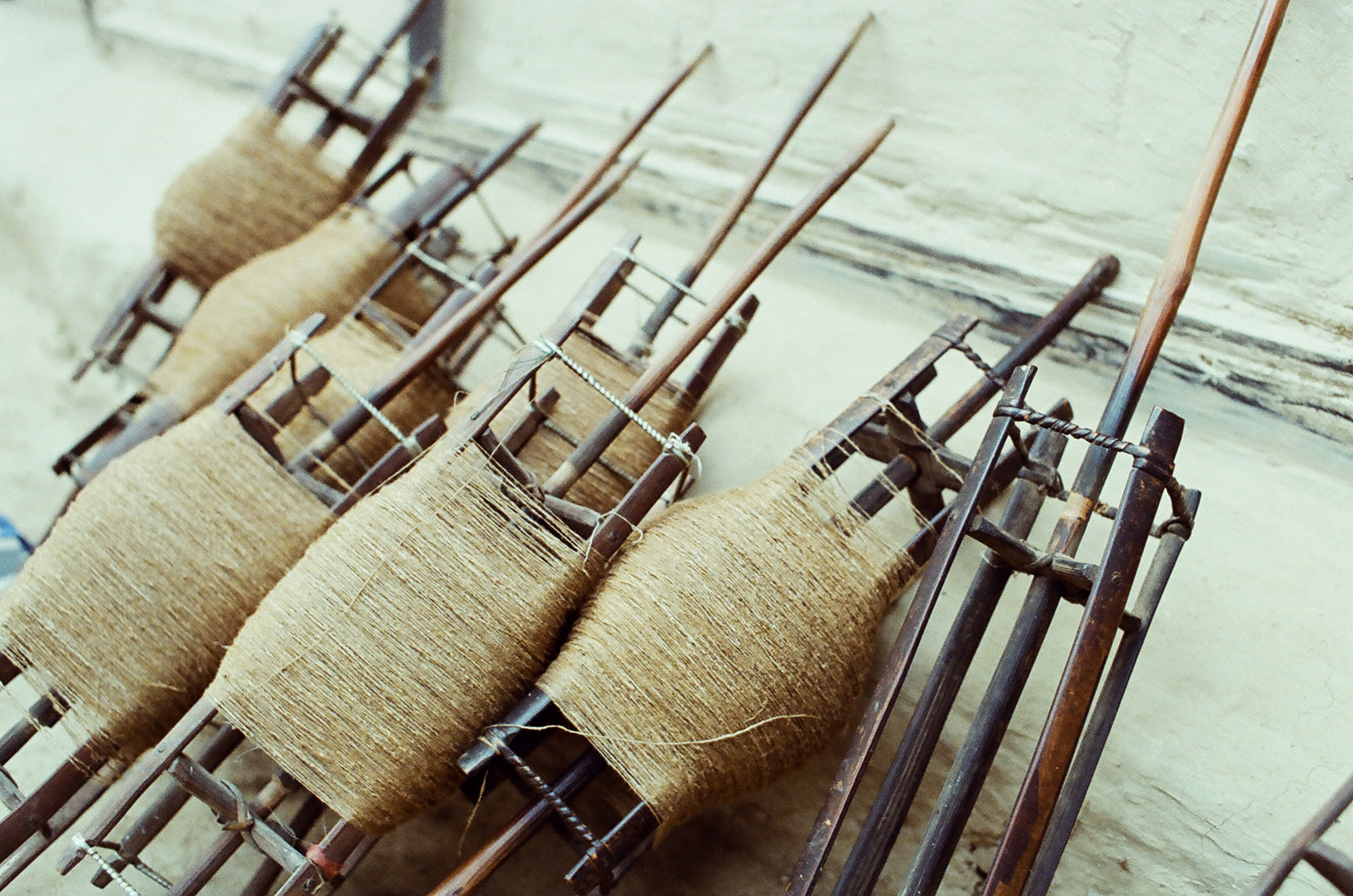
Mehndi dyed yarn waiting to be wound onto small bobbins.
The leaves of the mehndi plant, or henna plant, can be harvested all year round and change shades with the seasons. The women and men of the village use henna for adornment and beautification. After the henna leaves have been crushed and ground, the resulting paste is applied to fingers, toes and hair to dye them a reddish shade. When used on silk, it becomes a camel shade. These examples of the circular use of raw materials remind us of the importance of nature and the interconnectedness it engenders, whether it be between tradition and weather, lifestyle and cooking, or garments and seasons.
Every time we are in Assam, we experience our dyestuffs through different facets: harvesting mehndi leaves and grinding it to create paste to paint our hands; getting turmeric and using it for dyeing as well as for dinner; and climbing up trees to get teak leaves for dyeing. We get great support from dedicated individuals such as Latika and Chandan who are our hosts and core members of our team of our team. They take care of the dyeing and day-to-day management of our team. In addition to our work, we take inspiration from the cultural exchange that occur and the social practices that demonstrate the cohesiveness of the Assamese communities. One day last year, during a holiday, we were fortunate enough to witness group of women who gathered at a neighbor's house with a glass of milk each so that, as a group, they could make the sweet rice pudding "kheer" together.
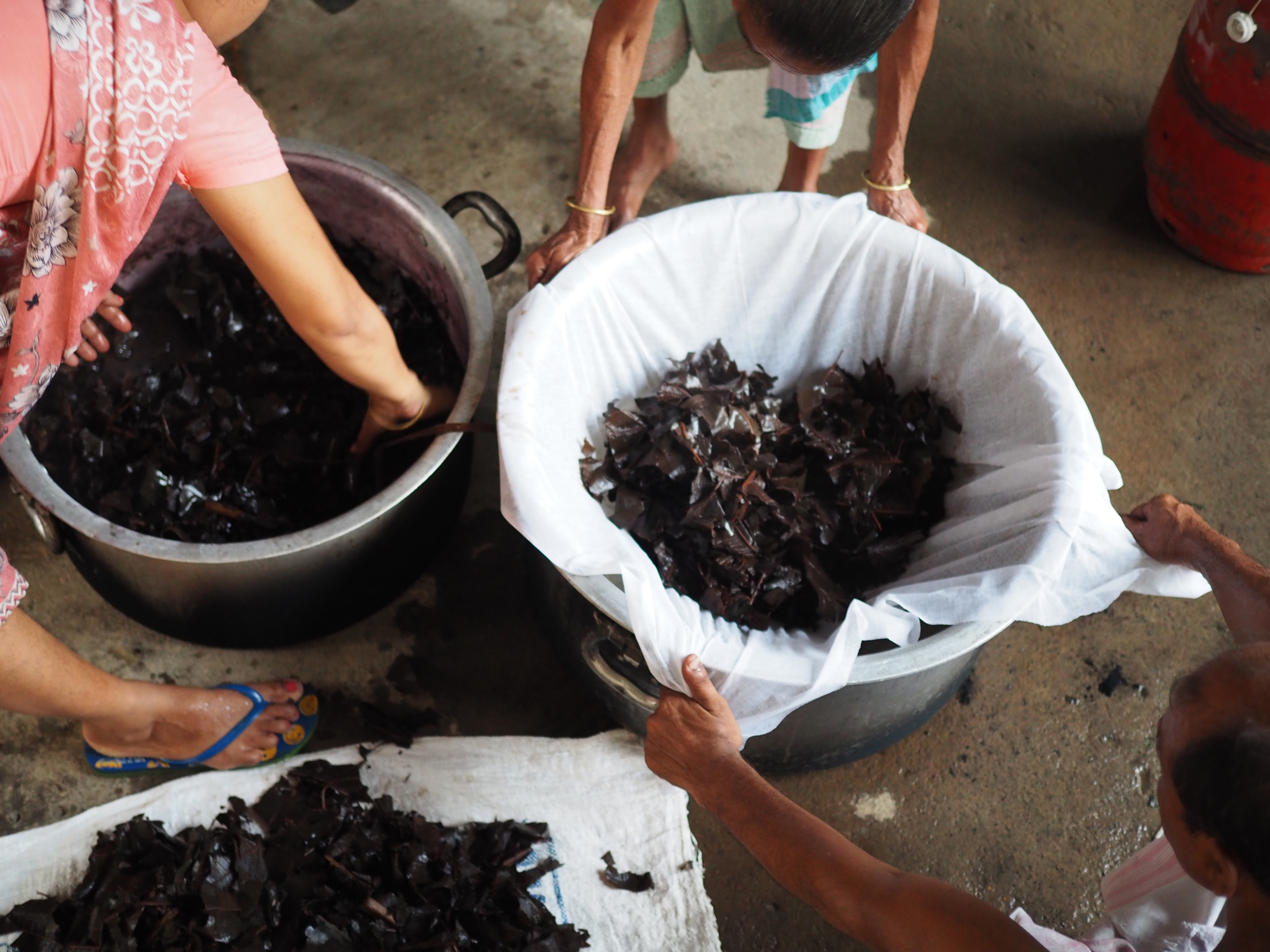
Dyeing with the leaves of the teak tree, a rare method that is still used today.
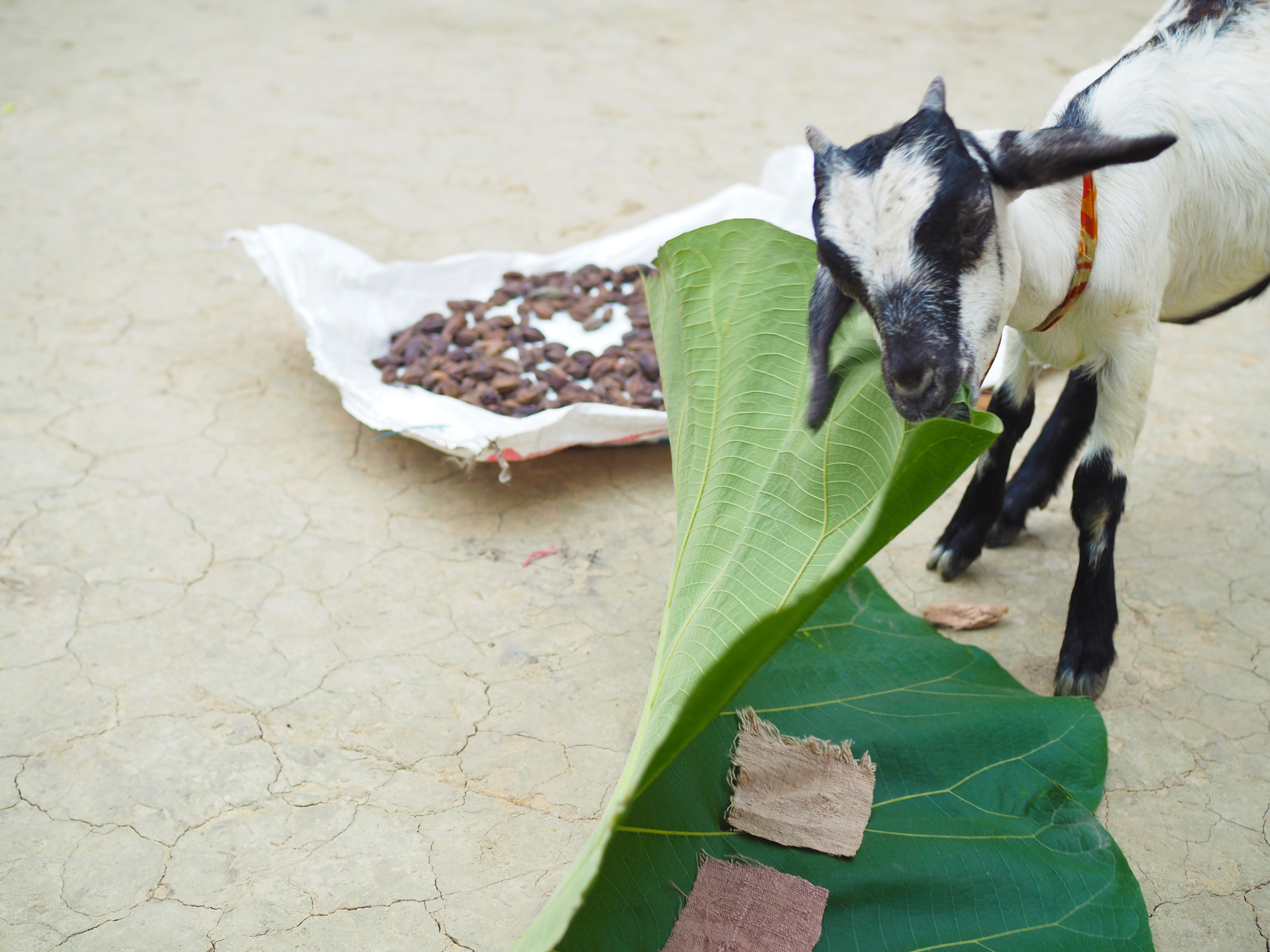
The different shades produced by the teak leaves,: rose, beige and grey.
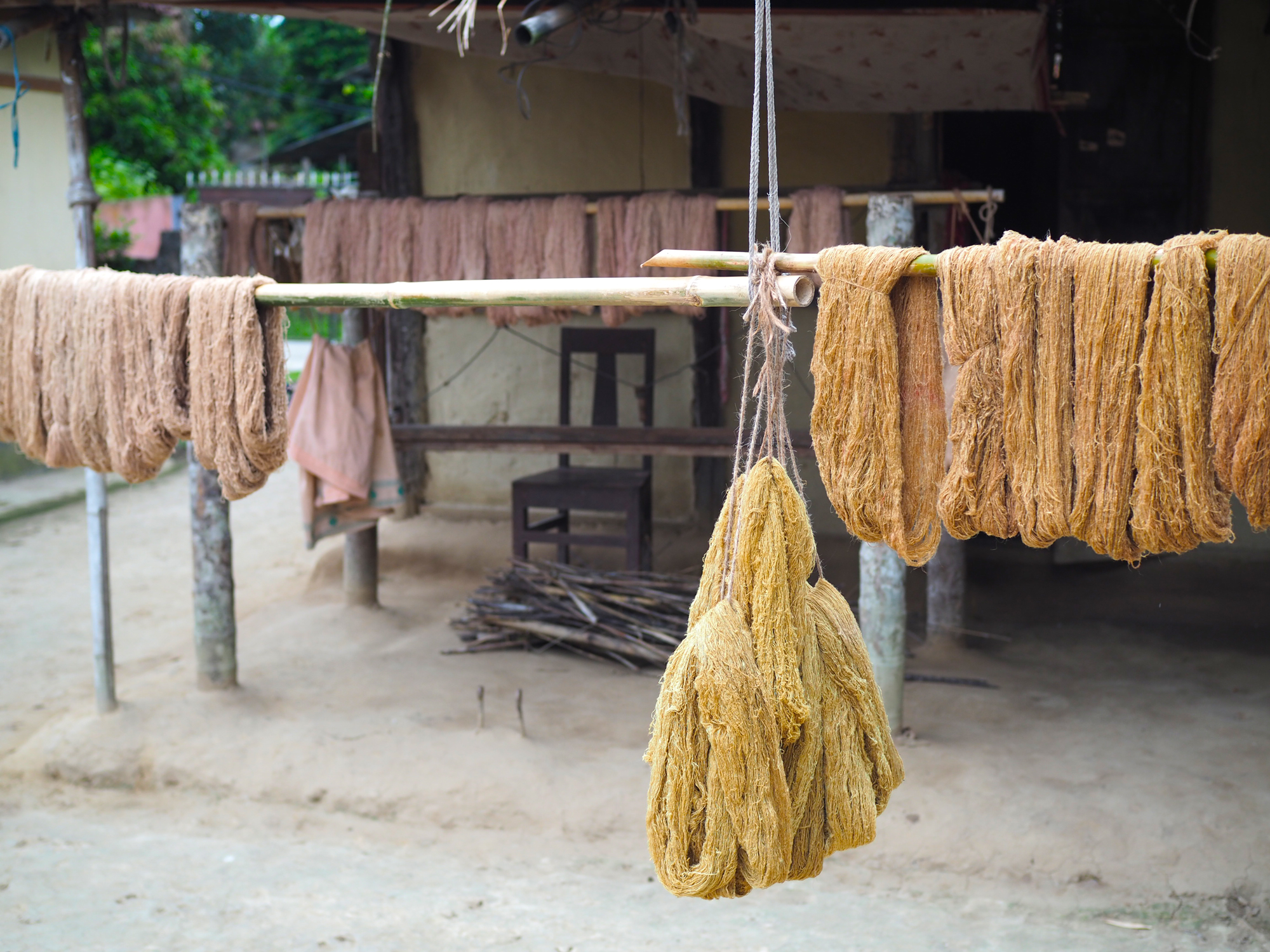
Yarn dyed with myrobalan pods, teak leaves drying in the backyard.
in Sensation, Sustainability,
and Heritage
Eri silk is highly valued not only for the environmental-friendly approach that is taken during its farming and production but also for of its qualities. In the summer, it provides a cooling effect, whereas on colder days it provides warmth and a feeling of coziness. There is an old proverb in Assam "dair pani, erir kani" which says that while yogurt cools, eri cloth provides warmth. The light imperfections of handspun yarn used to make eri textiles give them a distinctive character. Touching the smooth texture of these handwoven textiles allows us to imagine the journey of its creation, a sensation we would like more people to discover and enjoy.

The knowledge the indigenous people have about weaving, spinning, dyeing and the various traditions behind each step is a precious treasure that provides opportunity for exploration. The methods used by the locals are environmentally friendly and sustainable. Despite the faster production of mill spun yarn and machine-woven fabric, many Assamese women are willing to invest their time in handmaking them because it is a way to embrace their culture, to follow their pace of life, and pass on the craft to the younger generation.
We believe that these traditional and now "unconventional" production methods used for eri silk are vital to the longevity of the Assamese cultural heritage. They inspire people to see the unique beauty of handspun and handwoven silk textiles.

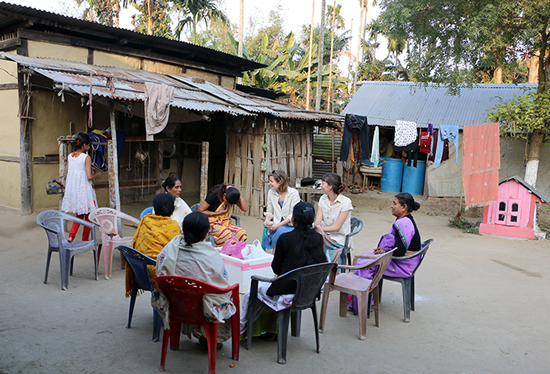
we are KAL is a social enterprise that creates eri silk textiles from Assam and wool textiles from Ladakh. It was founded by Catherine Allié and works in a close cooperation with local nomads, silk farmers and artisans. Everything started with Catherine's curiosity for weaving with natural fibers while living in New Delhi, which led her to a research journey towards Northeast and North India in February 2014. Always fascinated by fashion, but desiring higher standards for quality and ethics, she wanted to meet and collaborate with people involved in the making of textiles. She created we are KAL to support the unique traditions and the lifestyle linked to textile making—animal husbandry and cultivation, spinning, weaving and dyeing—and document its processes to create greater awareness. Aiming to live up to its name ("kal" in Hindi means "yesterday" and "tomorrow"), we are KAL uses the traditional ways of making textiles to create new paths for the future.

EDITING: COPYRIGHT © MOOWON MAGAZINE /MONA KIM PROJECTS LLC. ALL RIGHTS RESERVED.
PHOTOS & TEXT: COPYRIGHT © WE ARE KAL. ALL RIGHTS RESERVED.
TO ACQUIRE USAGE RIGHTS, PLEASE CONTACT US at HELLO@MOOWON.COM
